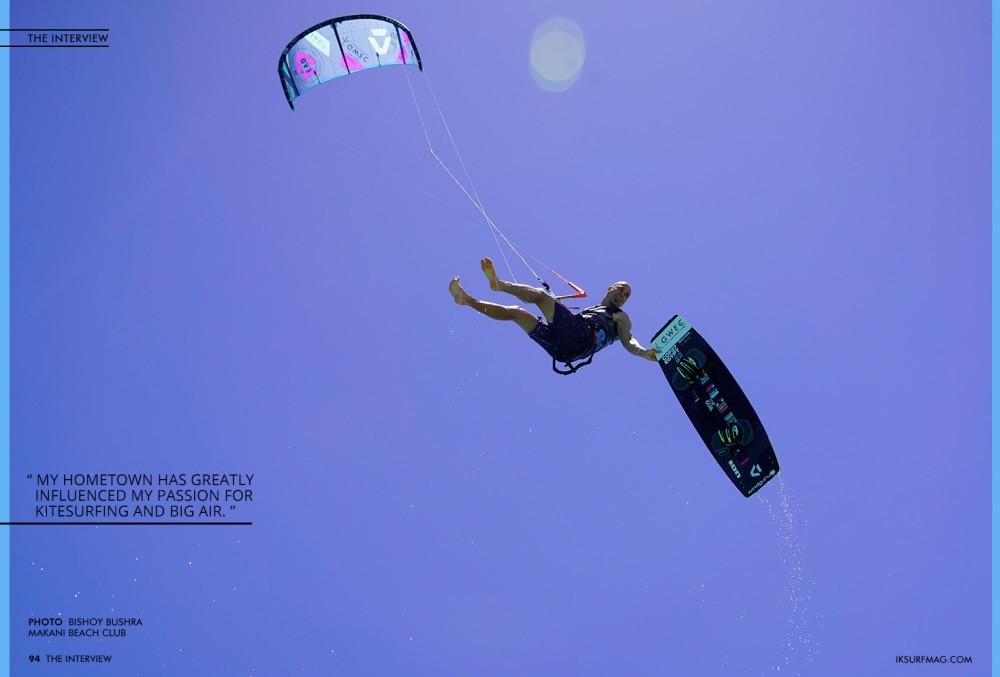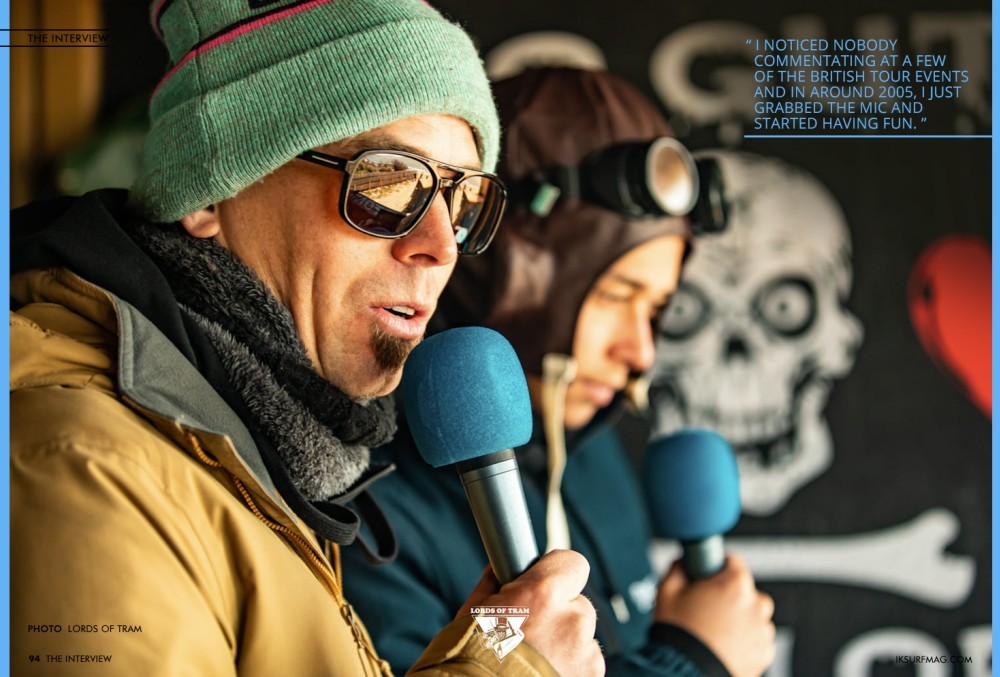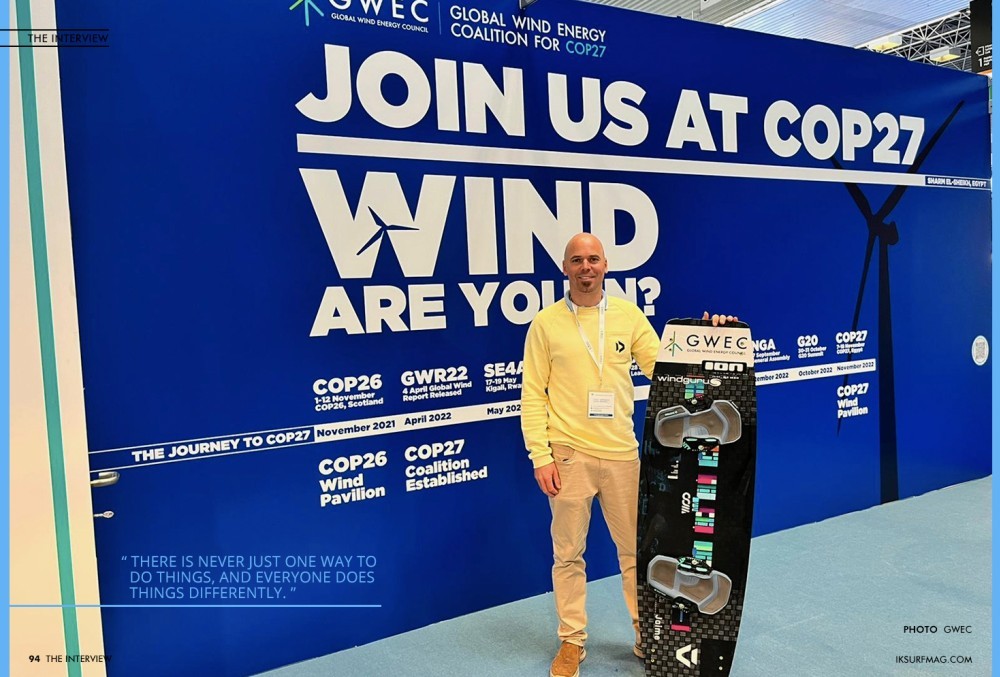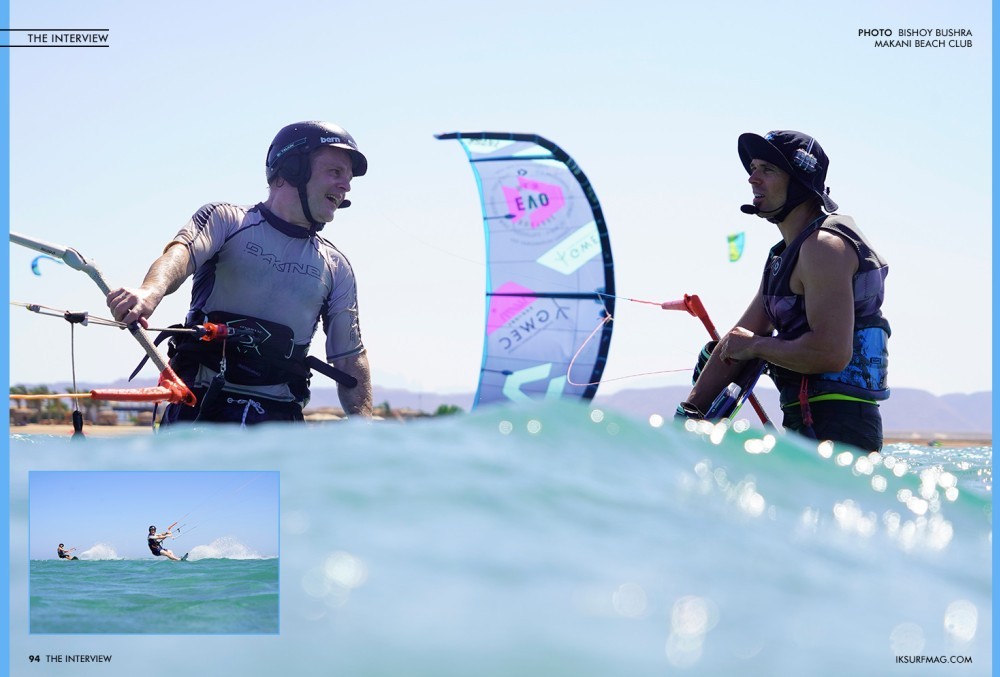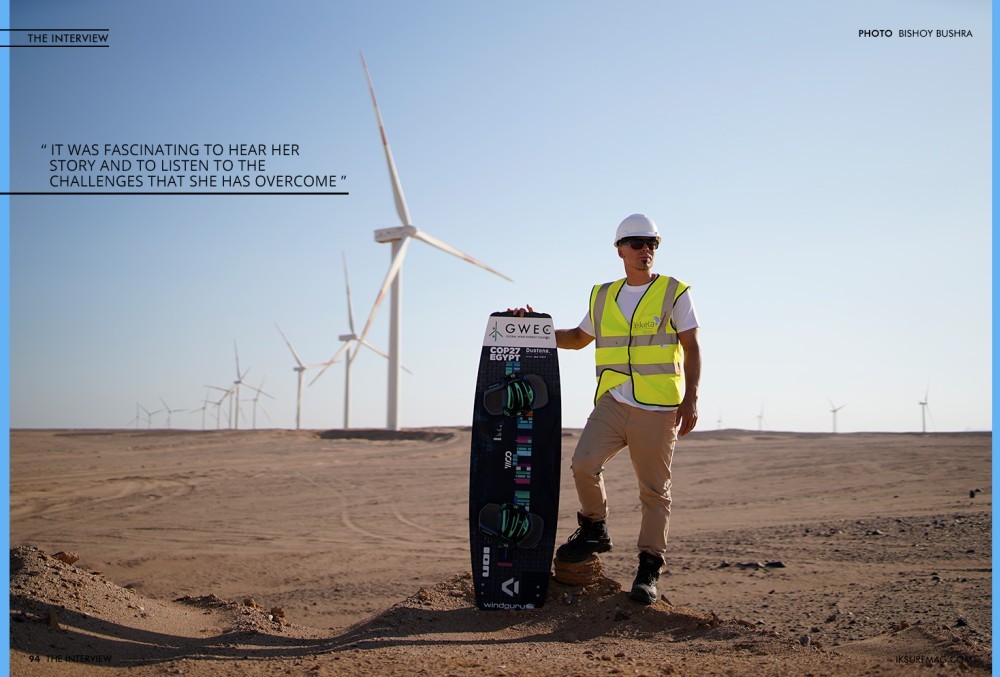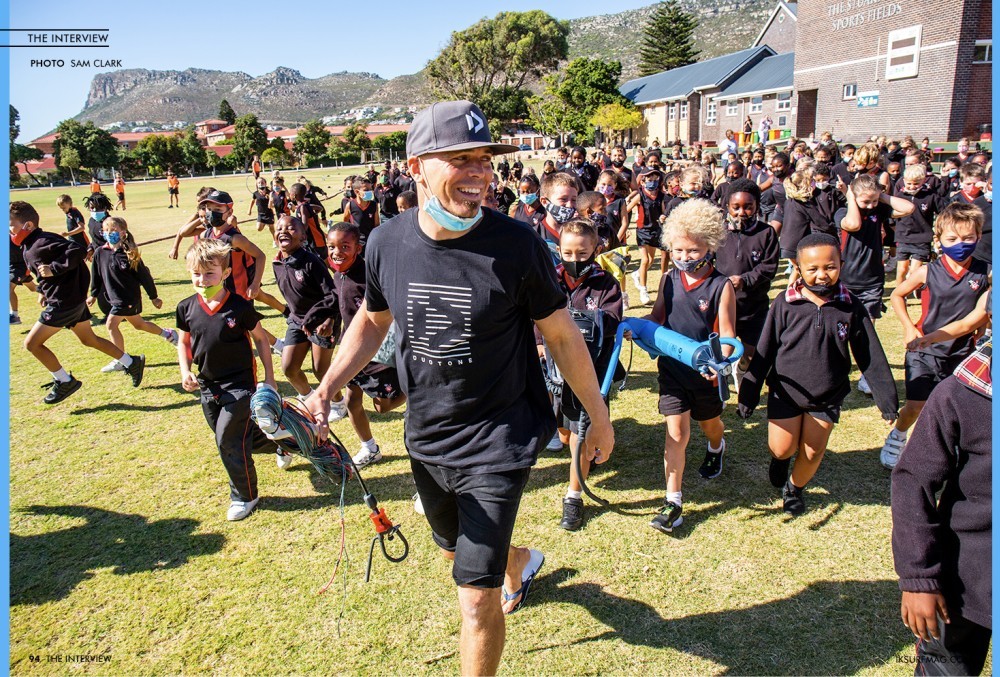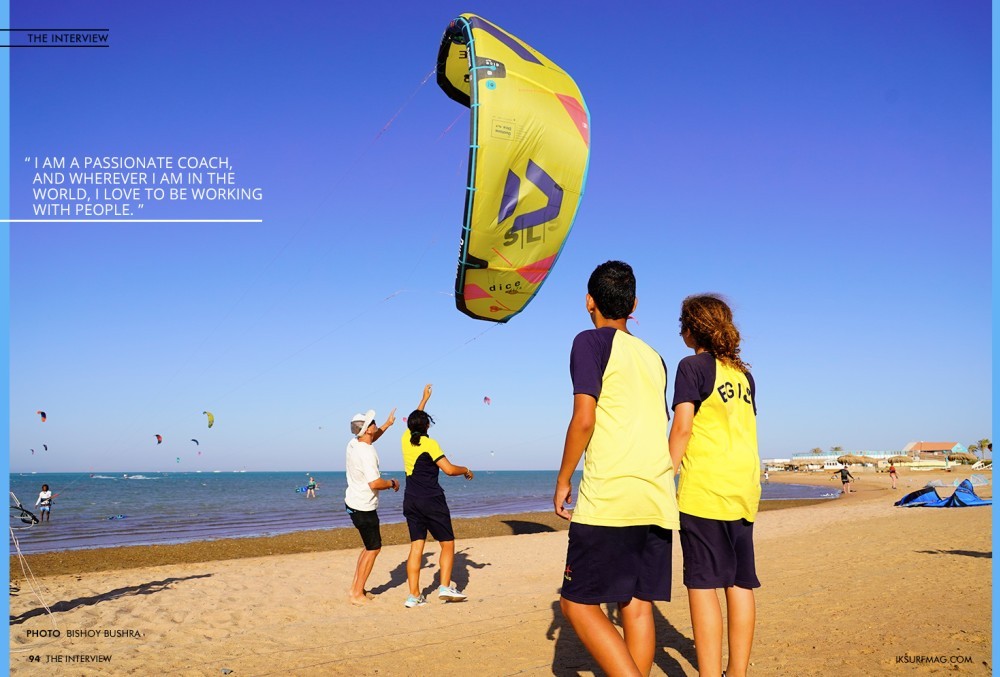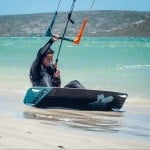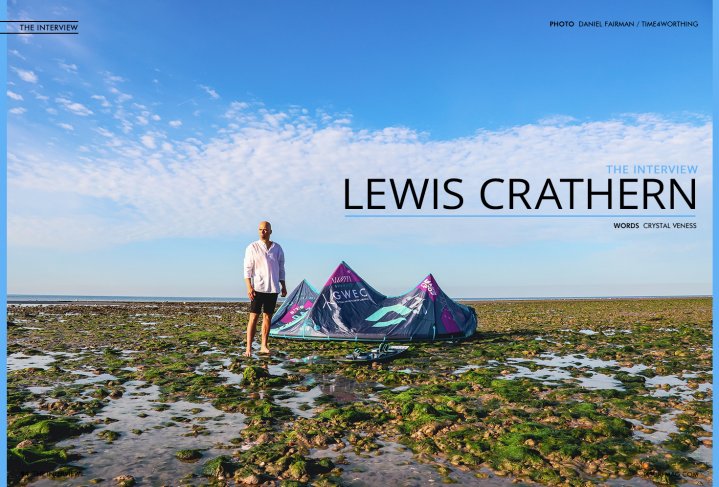
The Interview: Lewis Crathern
Issue 94 / Tue 9th Aug, 2022
Whether it's jumping piers, claiming podiums, or being the voice on the mic at some of the world's biggest kiting events, Lewis Crathern is, without a doubt, a household name in kitesurfing! In this interview, we find out what he's been up to, from competition to combating climate change. Read all about it in this IKSURFMAG exclusive!
Lewis, thanks so much for joining us for The Interview! Since I can remember, you have been a fixture in this industry. Can you tell us how it all began? Where did you grow up, and when did you start kitesurfing?
I was born in Worthing, West Sussex, and grew up at my family home on the beach. It's actually in East Worthing, so very close to Lancing Kite beach, one of the first places I learnt to kitesurf. I have always been into sports, and I transitioned from land to water sports at 16 when I started windsurfing. Seeing kitesurfing take off on the beaches around here in the early 2000s inspired me to try it myself; I loved the idea of the height. At that time, I was really into the diving boards at the local swimming pool, where me and about ten mates could do everything off the 3-metre board. Kitesurfing looked like it would give me more time in the air.
My hometown has greatly influenced my passion for kitesurfing and big air. We get such good wind here, often 40 knots or more, and it's given me the experience in those conditions to go anywhere and feel comfortable. I love my town and feel fortunate to have been born there and still live there!
You've inspired many people to get into kitesurfing, but who inspired you to start kiting?!
That's quite a hard question to answer as access to the rest of the world and what they were doing with kiting was not as easy as it is today. Simply put, the internet was still not efficient enough to even watch videos or find the information you wanted. The real inspiration came from everyone that appeared in the Breaking Wind VHS kiteboarding movie (VHS stands for Video Home System; it is how we used to watch things before DVDs)! I used to watch that video endlessly, especially enjoying the section on South Africa. Space Monkeys also came out quite soon after I got into the sport. That was another film I watched again and again. Aaron Hadlow, being British and a young rider already doing well on the international scene, was also a big inspiration.
Did kiting come naturally to you, or was it a bit of a struggle? Can you tell us your most intense memory from learning to kite?
If I'm honest, to start with, no, not really. In nearly all the sports I had ever taken part in, your own mobility was 100% down to you. Kitesurfing was different; I had to learn how to fly the kite to move around. Of course, my hand-eye coordination and sporting reaction helped me learn relatively quickly, but with the equipment back then being quite unforgiving, it sometimes felt like one step forward and two steps back. I started to meet many lovely people like Kev Maguire and Jez HT Jones, who would take the time to explain to me how it all worked and how I could be safe.
One memory that sticks out to me was when buying my first kite from a South African guy in Lancing, a Wipika FreeAir kite; I had never really flown one. I did a "try before you buy" at low tide on the sand. I had never been in a harness before, and I'll never forget being absolutely worked around the beach when the wind picked up. Driving home after buying the kite, I was a little disheartened, but I got over it and won the battle eventually.
The learning process is well behind you; you've been a star in the big air scene for nearly a decade! You've been in King of the Air nine times; do you have plans to compete in this event again?
If you include the Red Bull Len10 Megaloop Challenge in 2012, it's been ten straight years of competing in Red Bull Cape Town events. I may never have won the King of the Air, but I am proud of my consistency and appearances at the event. One of the hardest things to do as a big air rider is to stay fit and ready for the event whilst still training in the discipline.
It was a lifelong dream to know what it would be like to stand there on the podium, looking out at all those people, and I achieved that in 2018 - my 6th year of competing. My only regret is that I did not convert more of the semi-final chances into finals, riding in four semi-finals, but only one final.
Whilst I would never like to officially 'call it time', the direction the big air discipline is going and the format of KOTA may not suit my style these days. Sometimes sport is like that, but I like to think about how fortunate I was that the sport came closer to my skill set during a big part of my time at KOTA. I loved big air when I first got on the water, but with the PKRA and freestyle being dominant, I had to park my passion in order to try and compete. When big air returned to the scene, and KOTA came back, it became more and more about who could go the biggest and get the kite level with them. I had been riding with and following Ruben and Aaron a lot back then and learnt a lot about mega loops. I was in a good position to compete in this side of the sport when the quality of 'The MEGALOOP' was what scored best.
One thing I will say and something that I have observed over the years is that the very best of the best do not care which direction the sport is going in. Look at Aaron, Kevin and the likes of Liam; such is their natural talent that they can transition into a totally different discipline and still be aspiring to lead it.
Those who have followed your kiting journey know you experienced one of the worst accidents in a kiting competition. Do you think the long-term impact of that situation has affected your 'purpose' in kiting or your drive to focus on other things you value?
That crash back in 2016 was, in a terrible way, what our sport needed to step up in what we were doing with safety. I really took one for the team there! What's ironic is that I have often been referred to as somebody not so safe after my jump over Brighton Pier, but I have always cared about safety and especially for those competing. Kiteboarding events now have safety boats, divers and a well-trained events crew that are ready. When I look back at the video, I never think it's me. I don't really remember much at all from it, so it has not left any long-lasting scars emotionally or physically.
You are one of the most recognised voices in the industry, commentating on events like King of the Air, the GKA Big Air World Championships, Lords of Tram, and others. How did you get into commentating?
I have loved football all of my life. As a child, I remember staying up past bedtime, listening to games on my headphones. The good commentators could paint a picture of what was going on in such an incredible way. I loved how they did this, and so it became a passion of mine to do the same. I even remember commentating on our early FIFA football computer games. Fast forwarding a few years, I noticed nobody commentating at a few of the British Tour events and in around 2005, I just grabbed the mic and started having fun. That was it, really, and as I mentioned already, it is just another way of finding a challenge.
I've always admired your ability to share the action as it's happening, but more importantly, to translate it for people that may be seeing kitesurfing for the first time. Where did these crowd communication skills come from? Were they natural, or did they develop over time?
I owe a lot to kitesurfing and sport for learning these sorts of skills. To start with, by mixing with so many different people of different ages and backgrounds, I gained confidence as a young person. That is definitely one thing you need when speaking on the microphone. The competitive side of kitesurfing and sports, in general, requires many similar skills needed to present and talk, like delivering under pressure, problem-solving, good preparation, multitasking, and maths.
In my own time, I listen to a lot of TALK Sport radio and have educated myself on broadcasting as much as possible, the do's and don'ts, etc. I have always been open to learning from others as well. There is never just one way to do things, and everyone does things differently.
It might look like you just turn up and talk, but I put days and hours into my preparation notes. I love being able to pull out a relevant statistic when necessary, and I love being told in your earpiece, "right, you have 20 seconds to wrap this up and pass to Jo for prize giving"; it's exciting and keeps the adrenaline going.
Our Web Editor, Jen Tyler, spotted you on your recent trip to Egypt while you were working to promote COP27. What is COP, and where do you fit in?
For a long time now, I have been using my passion for kiteboarding to raise awareness of climate change and highlight how vital the role of wind energy can be. My sponsor GWEC planned the trip as Egypt is hosting the next edition COP27, the 27th United Nations Climate Change Conference, which takes place in Sharm El-Sheikh from the 7th-18th of November.
For nearly three decades, the UN has been bringing together almost every country on earth for global climate summits – called COPs – which stands for 'Conference of the Parties'. In that time, climate change has gone from being a fringe issue to a global priority. 2015 was a real key moment in COP's history as, for the first time, every country agreed to work together to limit global warming to well below 2 degrees and aim for 1.5 degrees, to adapt to the impacts of a changing climate and to make money available to deliver on these aims.
What did you get up to in Egypt?
I was tasked to meet with key individuals and young people whilst gathering a lot of content ahead of the COP27 event later in the year. Those key people included Gareth Bayley - Her Majesty's Ambassador to the Arab Republic of Egypt. I also went kitesurfing with him as he is a very competent kitesurfer! We rode at Makani Beach Club, and I actually gave him a big air coaching session.
We also went upds to visit Lekela's West Bakr Wind Farm, the huge new modern wind farm about three hours up the coast from El Gouna in a place called Ras Ghareb. Ras Ghareb is a fascinating town which has come about because of the oil and gas industry in the Red Sea. Driving up to the wind farm, you could see just how much of an impact oil and gas had made. Gas containers, rigs, pipes all the way along the road and, most noticeable to me was the graffiti on the side of the road. Oil is Gold.
Faisal Eissa (Lekela Energy Egypt Country Manager) met us at the wind farm and showed us around. It was an amazing experience being able to see everything close up but also to take pictures with me and my gear under the big turbines. Faisal is also a keen kitesurfer, and this really connected us all.
During my visit to the wind farm, I sat down with local employee Khuloud Bakry. Her story was really interesting, being a young local woman that worked at the wind farm. She is also a participant in the Women in Wind global GWEC program, which promotes the importance of women in the wind energy workforce. It was fascinating to hear her story and to listen to the challenges that she has overcome. Khuloud's home town of Ras Ghareb is a key example of a local community transitioning from Oil & Gas jobs to Wind Energy, and she told me how many generations in her family have worked in oil and gas, from her great grandparents to her parents and current family today. Khuloud was the first family member to work in renewables.
Back down south, we went to a local school in El Gouna to perform an assembly which went down great. The ambassador also joined me here, which really added something to it. Gareth really cares about climate change, and having him present and also doing a speech was brilliant.
Of course, there was a lot of kitesurfing to be done as all my boards and kites are GWEC and COP 27 branded. We spent every other minute at Makani Beach Club, where my media team, Joost Essenburg (filmmaker) and Bishoy Bushra (photographer), gathered content.
You've been partnered with GWEC for a while now; What is GWEC, and what are their goals?
The Global Wind Energy Council is the international trade association for the wind power industry, effectively the voice of the wind industry. I have been with the Global Wind Energy Council for a year and a half. It's a fantastic partnership, and I love my work with them. We have developed a brilliant school program using kitesurfing to engage with kids, and I am tasked with trips like the one to Egypt to raise awareness to wind energy. Occasionally, I attend Wind conferences which are really fun and great for networking.
GWEC's mission is to ensure that wind power establishes itself as the answer to today's energy challenges, providing substantial environmental and economic benefits. They communicate the benefits of wind power – to national governments, policymakers and international institutions.
GWEC also provides authoritative research and analysis on the wind power industry in more than 80 countries around the world, working with governments to give them transparent information about the benefits and potential of wind power, enabling them to make informed decisions about national energy policies.
Some still doubt that climate change is a grim and immediate reality. Perhaps they didn't experience the highest recorded heat in UK history at 40.3°C! Do you think there is enough awareness around the climate issues we are currently facing?
I think we need to do more to make it clear why we have an emergency and the fact that it is happening now. We are not on course to meet our zero target, which is the simple truth. We have to battle against things like climate misinformation and climate denial.
Climate Denial: Rejection of the proposition that climate change caused by human activity is occurring or that it constitutes a significant threat to human welfare and civilisation.
Climate disinformation and misinformation refers to deceptive or misleading content that:
- Undermines the existence or impacts of climate change, the unequivocal human influence on climate change, and the need for corresponding urgent action;
- Misrepresents scientific data, including by omission or cherry-picking, in order to erode trust in climate science, climate-focused institutions, experts, and solutions; and
- Falsely publicises efforts as supportive of climate goals that, in fact, contribute to climate warming or contravene the scientific consensus on mitigation or adaptation.
To gain trust in solutions against climate change, there needs to be increased scrutiny on social media platforms, newspapers and the press. We can also play our part, for example, by being aware that if we stay online for longer periods of time, we may well be presented with ideas and arguments that suit our views more, rather than reality.
As someone who has invested a lot of time into working with the GWEC, what do you think can be done in the short term - and the long term - to get us on a more sustainable path?
Overall we need to upscale wind energy. You will hear how it takes 6, 7 or even 8 years or longer to install a wind farm. That's not the actual physical bit of installing them! It does not need to take that long. Policies need to be changed to help us do things quicker.
There are 6 main areas the global wind industry faces challenges in the short and long term.
- Requirement of a bigger skilled workforce
- A better plan to phase out coal and redesign of our electricity framework
- Society: from public consensus, use of land and social acceptance
- Technology
- Infrastructure: Grid modernisation and expansion of infrastructure
- Supply Chain: recyclability of wind farm components and costs for materials.
It's not only the climate that has your attention but the future and the youth that will be in charge of it. Can you tell us about the youth programs you have been working with?
I have been working in schools since 2007 when I first went back to my high school to speak. I instantly felt like I had something (kitesurfing!) that would connect with young people, and I have since visited many schools in the UK and around the world. Duotone has supported me for 7 years with this work, and I have also partnered with the local wind farm here in my town - Rampion Wind Farm and Duotone UK. The Kitesurfing Armada Festival dedicated its first day, Friday, to young people, where I would perform an interactive assembly and a live session for them on the water. The British tour also used to feature wind energy sponsors, and children would visit the events where I would speak to them. More recently, I got involved with the Big Air Kite League 'Lift Off' program, designed for Pro Kiteboarders to share their story and inspire the next generation.
What has inspired you to work with school children and young people? As a pro kiter, what sort of knowledge are you sharing with them?
Kitesurfing has some immediate synergy with sustainability, looking after our beaches, recycling and staying healthy, but I like to also talk about my journey since school. I ask them what they want to do with their lives. Some know, and some do not. I definitely did not know! I think it is important to explain to young people that you can do things that you love as a job. Stay close to your passions, and your life will develop around them.
You're not just educating children; you're also working with grown-ups and experienced kiters. In fact, you coached me into landing front rolls consistently and with confidence - and grabs! Have you been doing more coaching in recent years?
Haha, I bet you are doing doubles now? I am a passionate coach, and wherever I am in the world, I love to be working with people. Sport and competitive sport is about facing challenges and wanting to overcome them. Many other areas of life are like that, I am finding. Coaching is a challenge! Everybody is different and to communicate what you are looking for in exactly the right way for that person is a challenge I love. Nothing is better than that feeling when somebody really executes what you are trying to communicate.
Can you share one of your most recent highlights in teaching kiting?
There was a lovely moment with the Ambassador in Egypt when I decided we needed a break. I wanted him to achieve a better hang time, and we were both a bit tired. I got us to both bring our kites down to the water so we could really talk directly, which is where I explained about always having the bar sheeted in fully in the air. Next jump, he was floating nicely!
You've accomplished so much already, but what would you say is one of your greatest accomplishments to date?
Brighton Pier, and to put myself mentally into that place where I could deliver that jump. That will always be one of my greatest achievements. I had to switch the whole world off in my head for a year to do that. I learned so much.
It's hard to imagine you've got time for anything else, but what's next for you? What does the second half of 2022 have in store?
We have a very busy summer in England now with Duotone UK, but the events scene will start to pick up again. I'll be doing some more commentary jobs at the end of summer, and we will start a campaign in Asia with GWEC in the Autumn. And then, just like that, Cape Town comes round again!
I need to thank my sponsors for all their support with the work I do: Windguru, WOO Sports, ION UK, GWEC, and Duotone International.
Thank you, Lewis!
Thanks!
Videos
By Crystal Veness
Editor at IKSURFMAG, Crystal Veness hails from Canada but is based in South Africa. When she isn't busy kitesurfing or reporting on the latest industry news for the mag, she is kicking back somewhere at a windy kite beach or working on creative media projects.




